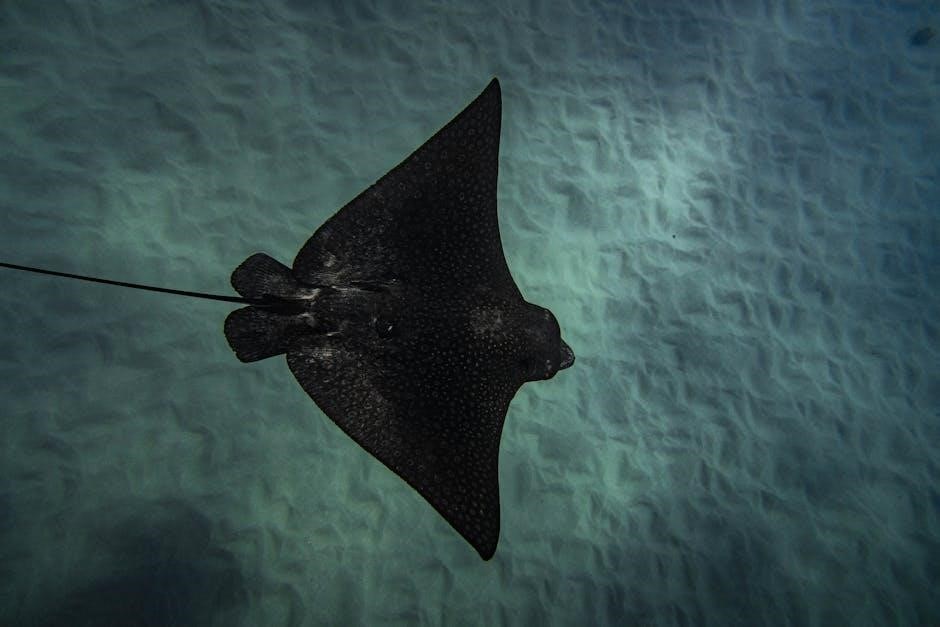Sciatic nerve glides, also known as nerve flossing or neural gliding, are gentle exercises designed to mobilize the sciatic nerve, relieving pain and improving mobility in the lower body.
What Are Sciatic Nerve Glides?
Sciatic nerve glides, also known as nerve flossing or neural gliding, are a series of gentle exercises designed to mobilize the sciatic nerve, reducing pain and improving mobility.
These exercises involve specific movements that guide the nerve through its natural pathway, enhancing flexibility and alleviating tension caused by compression or inflammation, without causing harm to surrounding tissues.
The Importance of Sciatic Nerve Mobility
Sciatic nerve mobility is crucial for maintaining proper nerve function and reducing pain. When the sciatic nerve becomes compressed or restricted, it can lead to inflammation and discomfort. Sciatic nerve glides help restore normal nerve movement, preventing chronic pain and improving overall lower body function. By enhancing nerve mobility, these exercises promote long-term relief and support daily activities without discomfort or limitation.
How Sciatic Nerve Glides Differ from Traditional Stretching
Sciatic nerve glides are distinct from traditional stretching as they focus on improving nerve mobility rather than muscle flexibility. Unlike static stretches that target muscles, nerve glides involve controlled movements to slide the sciatic nerve, reducing tension and enhancing its ability to move freely. This approach directly addresses nerve-related pain, making it more effective for sciatica management compared to conventional stretching methods that primarily target muscles and tendons.

Understanding Sciatica and Nerve Pain
Sciatica involves irritation of the sciatic nerve, causing pain and discomfort in the lower back and legs. It varies from acute to chronic cases, affecting mobility and quality of life.
What Causes Sciatic Nerve Pain?
Sciatic nerve pain arises from irritation or compression of the sciatic nerve, often due to herniated discs, spinal stenosis, or spondylolisthesis. Tight muscles or inflammation in the lower back can also contribute, leading to discomfort and limited mobility. Understanding the root cause is crucial for effective treatment and relief.
Common Symptoms of Sciatica
Sciatica typically causes pain radiating along the sciatic nerve, from the lower back to the legs. Symptoms include sharp or dull pain, numbness, tingling, and muscle weakness. Pain may worsen with sitting, coughing, or bending. Some individuals experience discomfort in the buttocks or legs, while others may have difficulty moving or standing. These symptoms can vary in severity and are often unilateral, affecting one side of the body more than the other. Recognizing these signs is key to addressing the condition effectively.
The Role of the Sciatic Nerve in Lower Body Function
The sciatic nerve plays a crucial role in controlling lower body movements and sensation. As the longest nerve in the body, it originates in the lower back and extends down both legs. It regulates muscle function, enabling activities like walking, running, and balancing. The sciatic nerve also facilitates sensory input, allowing sensations like touch and pain in the legs. Its proper functioning is essential for mobility, balance, and reflexes, making it vital for overall lower body health and functionality.
Benefits of Sciatic Nerve Glides
Sciatic nerve glides alleviate pain, enhance mobility, and improve flexibility, promoting long-term relief, preventing recurrence, and supporting overall lower body health effectively.
Reducing Sciatic Nerve Pain
Sciatic nerve glides are effective in reducing pain by gently mobilizing the nerve, alleviating compression and irritation. Regular practice can decrease inflammation, improve circulation, and restore normal nerve function, leading to significant pain relief. These exercises target the nerve directly, often providing faster relief compared to traditional stretching alone. By addressing the root cause of sciatica, nerve glides help minimize discomfort and restore mobility, making them a valuable tool for managing sciatic nerve pain effectively and safely.
Improving Flexibility and Mobility
Sciatic nerve glides enhance flexibility by gently stretching the nerve and surrounding tissues, improving range of motion. Regular practice reduces stiffness and promotes smoother movement in the lower body. These exercises also enhance joint mobility, particularly in the hips and knees, allowing for more fluid physical activity. Over time, consistent practice can lead to better muscle coordination and reduced tightness, fostering overall lower body functionality and making daily movements more comfortable and efficient.
Enhancing Long-Term Relief and Preventing Recurrence
Regular sciatic nerve glides help maintain long-term relief by improving nerve resilience and reducing inflammation. Consistent practice strengthens surrounding muscles, providing stability and reducing strain on the nerve. Over time, these exercises promote lasting pain relief and prevent recurrence by enhancing neural adaptability. Proper technique ensures sustained benefits, while a structured routine supports ongoing nerve health, creating a foundation for long-term wellness and minimizing the risk of future sciatica episodes.
Step-by-Step Guide to Performing Sciatic Nerve Glides
Start with proper posture in a quiet space. Sit or lie down, then gently extend your leg while keeping your knee straight. Use a strap if needed for support. Focus on smooth, controlled movements to avoid discomfort. Repeat the glide slowly, breathing deeply to relax. Perform 10-15 repetitions per side for optimal results. Consistency is key for relief and nerve mobility improvement.
Preparation and Warm-Up
Begin by creating a quiet, comfortable space to perform the exercises. Wear loose, non-restrictive clothing and ensure proper hydration. Start with light cardio or dynamic stretching to increase blood flow. Gently warm up the lower back, hips, and legs with movements like pelvic tilts or knee lifts. Avoid overexertion during the warm-up. Assess your current mobility and pain levels to adjust the intensity. If needed, consult a professional for personalized guidance. Consistency and patience are key to achieving lasting relief.
Standing Sciatic Nerve Glide
Stand tall with feet shoulder-width apart. Slowly bend forward at the hips, keeping knees slightly bent, and let your arms hang. As you bend, extend one leg behind you, keeping the knee straight. Focus on feeling a gentle stretch in the back of the leg. Hold briefly, then return to the starting position. Repeat on the other side. Perform 10-15 repetitions per side, ensuring smooth, controlled movements. Avoid bouncing or forcing the stretch beyond comfort.
Seated Sciatic Nerve Glide
Sit on the edge of a chair with your legs extended straight in front of you. Slide your heel toward your buttocks, bending the knee, while keeping your back straight. Hold the stretch briefly, then slowly return to the starting position. Repeat 10-15 times on each side. This glide targets the sciatic nerve, improving mobility and reducing tension. Keep movements smooth and controlled, avoiding force or discomfort.
Lying Sciatic Nerve Glide
Lie on your back with knees slightly bent. Lift one leg toward your chest, keeping the knee bent at 90 degrees. Gently pull the knee across your body until a mild stretch is felt in the back of the thigh or leg. Hold for 20-30 seconds, then slowly release. Repeat 3-5 times on each side. This glide helps reduce nerve tension and improves sciatic nerve mobility while minimizing discomfort.
Knee Extension Exercise
Sit on the floor with legs extended straight. Loop a towel or strap around the ball of one foot. Gently pull the foot back, extending the knee, until a mild stretch is felt in the back of the leg. Hold for 20-30 seconds, then release slowly. Repeat 3-5 times on each side. This exercise improves sciatic nerve mobility and reduces tension, enhancing flexibility in the lower extremities while promoting nerve glide.

When to Use Sciatic Nerve Glides
Use sciatic nerve glides during acute sciatica flare-ups, for chronic pain management, or post-surgery to enhance recovery. They are ideal for improving nerve mobility and reducing discomfort, especially after physical activity or prolonged sitting. Incorporate them into daily routines for preventive care and long-term relief from sciatic-related symptoms.
For Acute Sciatica Symptoms
Sciatic nerve glides are beneficial during acute sciatica episodes to alleviate sharp pain and numbness. Gentle, controlled movements help reduce nerve tension without exacerbating the injury. Perform exercises slowly, focusing on comfort levels to avoid worsening symptoms. These glides can be a first-line treatment to restore mobility and ease discomfort. Consistency is key, but always adjust based on pain levels and consult a professional if symptoms persist or worsen. Early intervention can prevent progression to chronic issues.
For Chronic Sciatica Management
Sciatic nerve glides are an effective strategy for managing chronic sciatica, helping to improve mobility and reduce recurring nerve irritation. Regular practice enhances flexibility, strengthens surrounding muscles, and promotes long-term relief. These exercises are particularly useful for individuals with persistent symptoms, as they target the root cause of discomfort. Consistency is crucial, and incorporating glides into a daily routine can significantly reduce flare-ups. Professional guidance ensures a personalized approach for sustained improvement and better overall lower body function.
Post-Surgery Rehabilitation
Sciatic nerve glides are a valuable tool in post-surgery rehabilitation, aiding in the restoration of nerve mobility and strength. These exercises help prevent scar tissue formation and promote healing. Gentle glides can reduce residual pain and improve range of motion. Incorporating them into a rehabilitation plan supports faster recovery and helps patients regain functional mobility. Consistency and proper form, guided by a healthcare professional, are essential for optimal outcomes and preventing future complications.
Advanced Variations of Sciatic Nerve Glides
Exploring advanced techniques, such as resistance band exercises and combined movements, can enhance sciatic nerve glide effectiveness for improved mobility and strength in targeted areas.
Combining Glides with Strengthening Exercises
Combining sciatic nerve glides with strengthening exercises, such as core stabilization or glute activations, enhances lower back and hip stability. This integrated approach improves nerve mobility while building muscular support, reducing strain on the sciatic nerve. Strengthening the surrounding muscles helps maintain proper posture and movement patterns, which are essential for long-term sciatica management. Exercises like bird dogs or clamshells can be paired with glides for a balanced routine. This combination promotes both flexibility and strength, addressing the root causes of sciatic nerve tension.
Incorporating Neural Mobilization Techniques
Neural mobilization techniques focus on improving the sciatic nerve’s ability to glide freely within its surrounding tissues. These methods involve gentle, targeted movements that enhance nerve mobility without stretching. By addressing soft tissue restrictions and promoting optimal nerve function, neural mobilization reduces tension and alleviates pain. Techniques like sliding or flossing can be combined with glides for comprehensive relief. This approach ensures the nerve moves efficiently, supporting overall sciatic nerve health and reducing discomfort during daily activities.
Using Resistance Bands for Enhanced Mobilization
Resistance bands can enhance sciatic nerve glide exercises by adding controlled tension. They allow for gentle stretching and mobilization of the nerve, improving flexibility and reducing tension. By incorporating bands, users can progressively increase resistance, strengthening surrounding muscles while promoting nerve mobility. This method is particularly effective for advanced practitioners seeking to deepen their practice. Consistency with resistance band exercises can lead to improved long-term relief from sciatic nerve discomfort and enhanced overall lower body mobility.

The Role of Physical Therapy in Sciatic Nerve Glides
Physical therapy plays a crucial role in enhancing sciatic nerve glides through expert supervision, personalized treatment plans, and comprehensive care, optimizing recovery and long-term sciatica management.
Professional Guidance for Optimal Results
A physical therapist provides expert supervision to ensure sciatic nerve glides are performed safely and effectively. They tailor exercises to individual needs, offering real-time feedback and adjustments. This personalized approach maximizes benefits, reduces injury risk, and accelerates healing. Regular sessions help maintain proper technique, enhancing long-term outcomes and empowering patients with self-management strategies for sustained relief from sciatica symptoms.
Customized Exercise Plans
Physical therapists create tailored exercise plans to address specific sciatica cases. These plans consider the patient’s symptoms, lifestyle, and goals. A customized approach ensures exercises target the root cause of pain, promoting faster recovery. By incorporating sciatic nerve glides alongside strengthening and stretching, individuals achieve balanced mobility and strength. Regular assessments allow adjustments, keeping the treatment aligned with progress and needs for optimal, long-term relief from sciatic nerve discomfort.
Monitoring Progress and Adjustments
Physical therapists regularly assess patient progress to ensure exercises remain effective. Adjustments are made based on symptom changes and functional improvements. This adaptive approach helps address evolving needs, preventing plateaus. Patient feedback is crucial, guiding modifications to optimize relief and mobility. By continuously refining the plan, therapists aim for sustainable, long-term outcomes in managing sciatic nerve discomfort and enhancing overall lower body function.

Combining Sciatic Nerve Glides with Other Treatments
Sciatic nerve glides are often paired with therapies like ice, heat, massage, and core exercises to enhance pain relief and improve mobility for better overall recovery.
Ice and Heat Therapy
Ice and heat therapy are effective complementary treatments to sciatic nerve glides. Ice reduces inflammation and numbs pain, while heat relaxes tight muscles and improves blood flow. Apply ice for 15-20 minutes to acute areas, then switch to heat therapy using a warm compress or heating pad. Alternate between the two as needed to alleviate discomfort and enhance the effectiveness of nerve glides. Always wrap ice packs in a cloth to avoid direct skin contact and prevent tissue damage.
Massage and Soft Tissue Work
Massage and soft tissue work can complement sciatic nerve glides by reducing muscle tension and improving circulation. Techniques like deep tissue massage and myofascial release target tight muscles along the sciatic pathway, such as the piriformis and hamstrings. Foam rolling or self-myofascial release can also relieve pressure on the sciatic nerve. Regular massage enhances the effectiveness of nerve glides by breaking down adhesions and scar tissue, promoting a healthier environment for nerve mobility. Always work with a licensed professional to ensure safe and effective treatment.
Core Strengthening Exercises
Core strengthening exercises are essential for stabilizing the lower back and pelvis, reducing strain on the sciatic nerve. Weak core muscles can contribute to poor posture and movement patterns, exacerbating sciatica. Exercises like planks, bird-dog, and pelvic tilts improve spinal stability. Strengthening the transverse abdominis and obliques helps maintain proper alignment, reducing nerve compression. Incorporating core work into your routine enhances the benefits of sciatic nerve glides by addressing the root causes of instability and promoting long-term relief from sciatica symptoms.
Long-Term Management of Sciatica

Long-term sciatica management involves consistent sciatic nerve glides, maintaining mobility, and strengthening surrounding muscles to support spinal stability and prevent recurrence.
Creating a Consistent Exercise Routine
A consistent exercise routine is crucial for managing sciatica long-term. Incorporate sciatic nerve glides 2-3 times daily, paired with core strengthening and gentle stretches. Start with short sessions, gradually increasing duration and intensity. Warm-up with light cardio, followed by targeted exercises to improve flexibility and strength. Maintain proper posture during workouts to avoid strain. Track progress and adjust routines as symptoms improve or change; Consistency helps prevent flare-ups and supports overall spinal health.
Postural Awareness and Ergonomics
Maintaining proper posture and ergonomics is essential for managing sciatica; Poor alignment can compress the sciatic nerve, worsening symptoms. Ensure your workspace promotes neutral spine alignment—adjust chair height, desk position, and monitor placement. Take regular breaks to stretch and move, especially if sedentary. Good posture reduces nerve pressure, while ergonomic adjustments prevent strain. These practices, combined with sciatic nerve glides, support long-term relief and prevent recurrence. Consistency in daily habits fosters a healthier spine and reduces discomfort.
Nutrition and Lifestyle Modifications
Adopting an anti-inflammatory diet rich in omega-3 fatty acids, antioxidants, and essential vitamins can help alleviate sciatic nerve pain. Foods like fatty fish, berries, and leafy greens support nerve health. Staying hydrated is crucial for maintaining spinal disc health and nerve function. A healthy weight reduces pressure on the sciatic nerve, while regular exercise and stress management techniques, such as meditation or yoga, can reduce muscle tension. Avoid smoking and excessive alcohol to promote nerve healing and overall well-being.

When to Consult a Healthcare Professional
If experiencing severe pain, numbness, or weakness in the legs, or loss of bladder/bowel control, seek immediate medical attention. These symptoms may indicate serious underlying conditions requiring professional evaluation and treatment.
Signs of Worsening Symptoms
If you experience increasing pain, persistent numbness, or worsening tingling, it may indicate a progressing condition. Difficulty moving legs, loss of reflexes, or severe weakness are alarming signs. Loss of bladder or bowel control is a medical emergency. These symptoms could signal serious issues like a herniated disc or spinal stenosis. Consulting a healthcare professional promptly is essential to address these concerns and prevent further complications, ensuring proper diagnosis and treatment.

Underlying Conditions Requiring Medical Attention
Certain conditions, such as herniated discs, spinal stenosis, or spondylolisthesis, may require medical intervention. Sciatic nerve pain can also stem from degenerative disc disease or piriformis syndrome. If sciatic nerve glides do not alleviate symptoms, it may indicate a more complex issue. Conditions like cauda equina syndrome demand immediate care. A healthcare provider can diagnose and treat these underlying causes, ensuring appropriate management and preventing long-term damage. Early intervention is crucial for effective recovery and pain relief.
Developing a Comprehensive Treatment Plan
A well-rounded treatment plan combines sciatic nerve glides with physical therapy, ice/heat therapy, and massage. Monitoring progress and adjusting exercises ensures effectiveness. Consistency is key for long-term relief. A healthcare provider can tailor the plan to address specific needs, promoting faster recovery and preventing recurrence. Regular check-ins help track improvements and make necessary adjustments. This holistic approach ensures sustained benefits and supports overall lower body health.
Sciatic nerve glides offer effective pain relief and improved mobility. Consistency is key for long-term benefits. Combine with other therapies and consult professionals for a comprehensive plan.
Summarizing the Benefits of Sciatic Nerve Glides
Sciatic nerve glides are a powerful tool for alleviating sciatica symptoms by improving nerve mobility and reducing tension. They enhance flexibility, strengthen surrounding muscles, and promote long-term pain relief. Regular practice can prevent recurrence, improve posture, and restore functional movement. These exercises are versatile, suitable for both acute and chronic cases, and complement other therapies like physical therapy or massage. Consistency is key to maximizing their benefits and achieving sustainable relief from sciatic nerve discomfort.
Encouraging Consistency and Patience
Consistency and patience are crucial when practicing sciatic nerve glides. These exercises are a gradual process, and noticeable improvements may take time. Setting realistic goals and tracking progress can help maintain motivation. Celebrate small victories, like increased mobility or reduced pain, to stay encouraged. Remember, persistence is key to achieving long-term relief and preventing future discomfort. Stay committed, and over time, you’ll experience the full benefits of sciatic nerve glides for a healthier, pain-free lifestyle.
Final Thoughts on Sciatica Management
Effective sciatica management requires a holistic approach, combining sciatic nerve glides with other therapies. Consistency in exercises, alongside patience, is vital for long-term relief. Incorporating physical therapy, ice/heat treatments, and lifestyle adjustments can enhance outcomes. Stay proactive, as managing sciatica is a journey. With dedication and the right strategies, individuals can achieve significant pain reduction and improved mobility. Remember, progress may be gradual, but persistence leads to lasting results and a healthier, pain-free lifestyle.

Additional Resources

Explore sciatic nerve glides PDF guides, online tutorials, and expert forums for deeper insights. Attend workshops for hands-on learning and personalized advice from professionals.
Recommended Reading and Guides
Discover comprehensive guides and downloadable sciatic nerve glides PDF resources that offer detailed exercises and techniques. These materials often include visual aids, step-by-step instructions, and expert tips for effective nerve mobilization. Many guides are designed by physical therapists, ensuring evidence-based methods. Look for e-books or manuals that focus on sciatica relief and neural mobilization. These resources are ideal for home practice and can complement professional therapy. Always opt for guides endorsed by healthcare professionals for reliable and safe exercises.
- Downloadable PDFs with illustrated exercises
- E-books focusing on sciatica management
- Clinical guidelines for nerve mobilization
These resources are widely available on reputable health websites and often include free or paid options. They provide a structured approach to improving sciatic nerve mobility and reducing pain. Consulting a physical therapist can help tailor these guides to your specific needs.
Online Communities and Forums
Join online forums like Reddit’s r/Sciatica or Facebook sciatica groups to connect with others managing sciatic nerve pain. These communities share experiences, advice, and resources, including downloadable PDF guides on sciatic nerve glides. Engaging with these groups provides emotional support and practical tips, helping you feel connected and informed throughout your recovery. Participating can reduce isolation and offer valuable real-world insights from others facing similar challenges.
Professional Consultations and Workshops
Consulting a physical therapist or attending specialized workshops can deepen your understanding of sciatic nerve glides. Many professionals offer downloadable PDF guides tailored to your needs. Workshops often include hands-on instruction, correcting techniques and optimizing results. These resources ensure proper form and safety while maximizing pain relief and mobility. Consider seeking expert guidance to refine your practice and prevent recurrence of symptoms.
